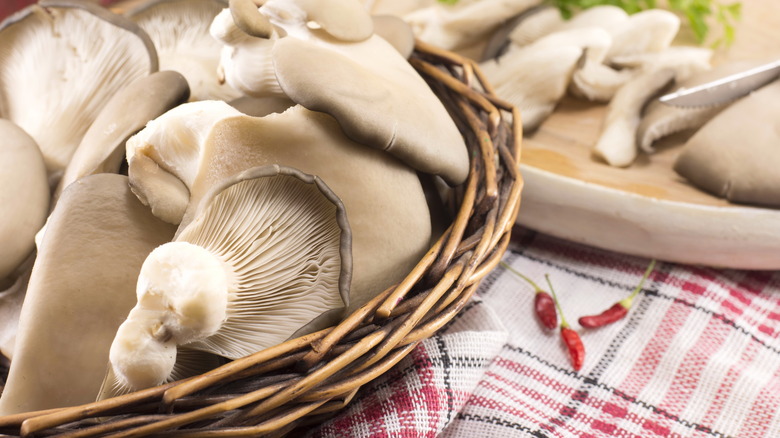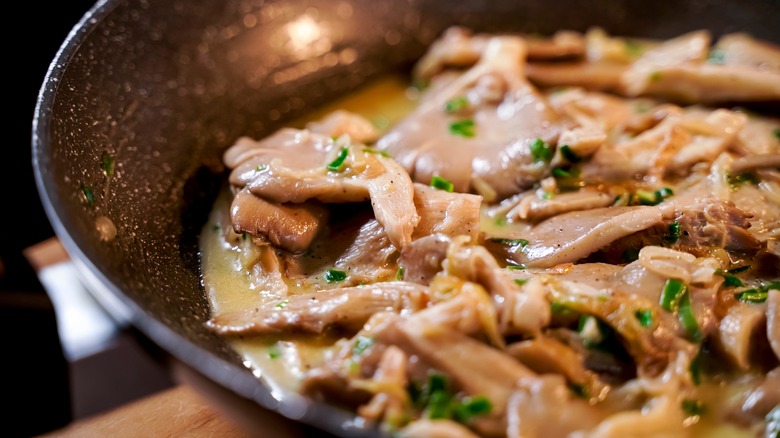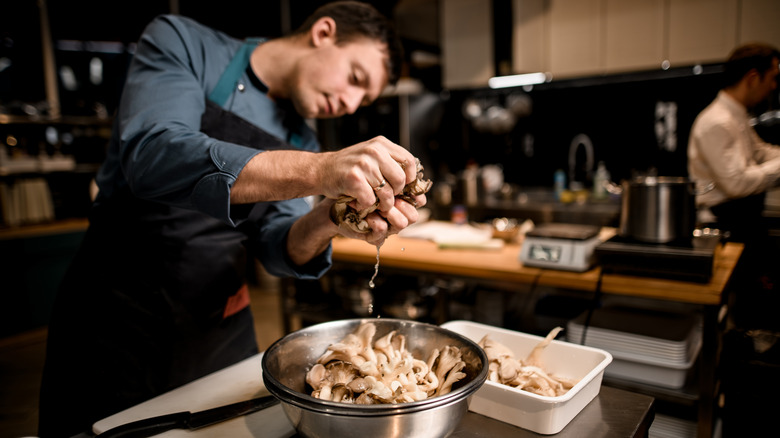The Oyster Mushroom Cooking Mistake You Need To Avoid
Many mushrooms taste great and have incredible health benefits. However, others can make you sick or even kill you. Mushrooms are neither plants nor animals, yet they grow out of the ground and share some of the texture and umami flavors of meat. It's only natural that getting them right, culinarily speaking, comes with a bit of a learning curve. As a result, mushrooms can be rather divisive.
Sporeshift explains that cooked mushrooms can be repulsive to some palates. When it comes to the more elusive, cultivated varieties like shiitake, enoki, porcini, and oyster mushrooms, this can result in an expensive mistake. Oysters are among the most approachable of the "specialty" mushrooms. They can be a welcoming, friendly-looking next step for the eater who's accustomed to white buttons or perhaps baby bellas. To prevent them from becoming as wet and amorphous as the creature they're named after, though, you'll need practice.
Are oyster mushrooms worth it?
The first thing you should know about mushrooms is that, despite their firm, chunky appearance, they are quite spongy. On the stovetop, mushrooms tend to excrete a large amount of liquid that can ruin a well-intentioned sautéeing plan. Sadly, this results in mushy, unappealing mushrooms, and that's not going to convince any hesitant foodie to try oyster mushrooms. Some 40 varieties of oyster mushrooms, eaten for centuries, pack high concentrations of vitamin B5, niacin, protein, antioxidants, and many other potentially health-boosting compounds.
Oyster mushrooms get their name because their flat, oval, and often grayish caps resemble oysters — not because of their flavor; although The Mushroom Council says that they can have a slight taste of seafood. Sporeshift describes them as having a mild bacon-like flavor that easily absorbs the flavors of seasonings and sauces, but others claim they're "meaty," "nutty," and "earthy." Many sources speak to how they can crisp up and even become a little crunchy, but how do you achieve this?
How to buy and cook oyster mushrooms
MasterClass recommends that home cooks rinse dry oyster mushrooms thoroughly before cooking. Salon suggests heating ample oil in a pan, adding your mushrooms in a single layer, and allowing them to cook without stirring or shaking the pan. Add any spices and salt that you want at the very end. You may want to cook other ingredients, like onions, in their own pan. The idea is to let the oysters' "sweat" evaporate off without continually adding more moisture to them.
When shopping for oyster mushrooms, The Mushroom Council recommends opting for fresh, fat, unblemished branches that aren't damp or brittle. You can eat every part of an oyster mushroom and store them in a breathable bag in the fridge — just clean them gently right before use. Try out your new cooking ingredient with recipes like gai lan with oyster mushrooms, or brussels sprouts with pearl onions, mushrooms, and crispy prosciutto. Even if you're not sold on them yet, with time and effort, oyster mushrooms just might grow on you.


